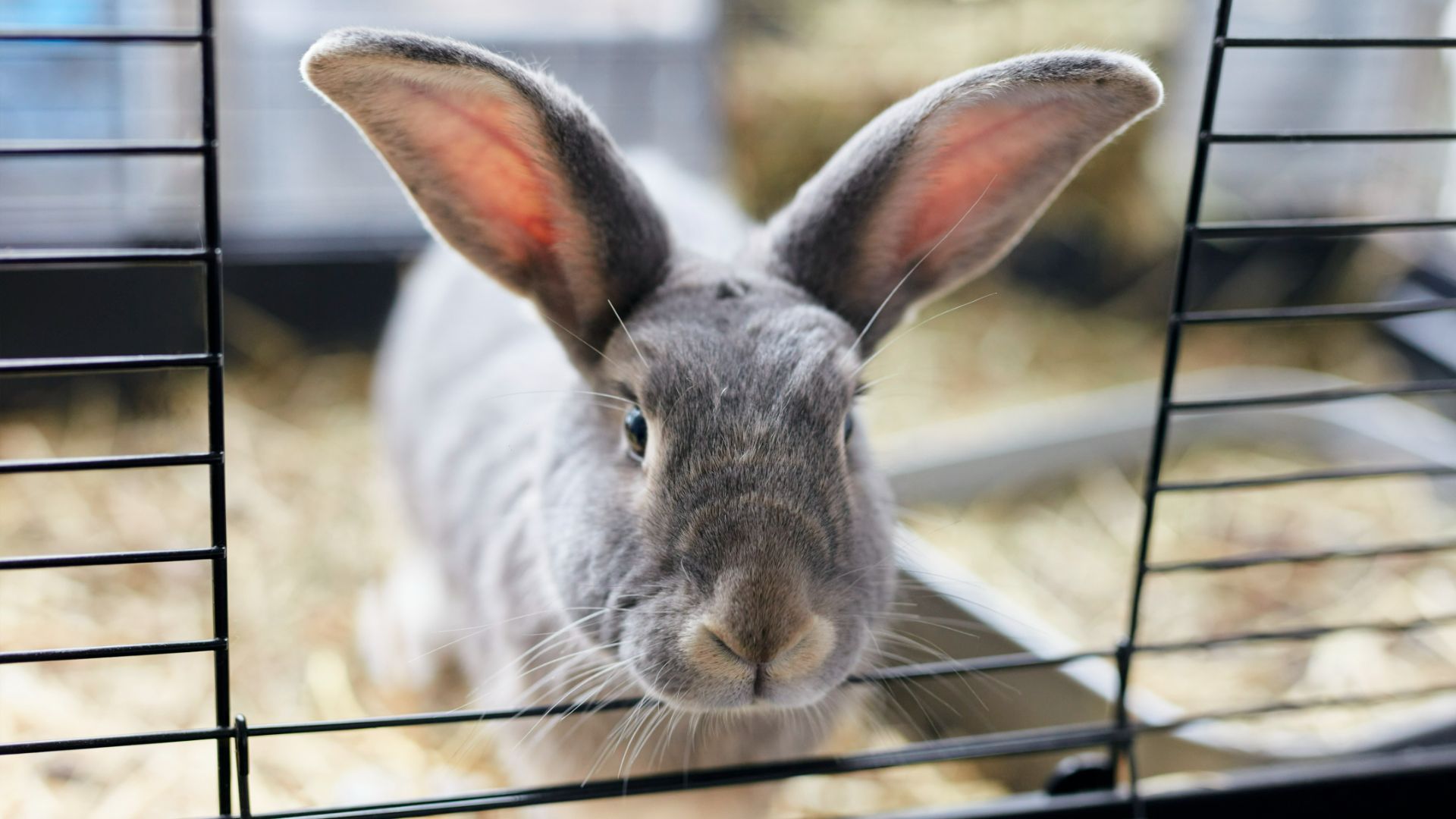How to litter box train a rabbit in 5 easy steps
Vet lays out everything you need to know about how to litter box train a rabbit.

Knowing how to litter box train a rabbit is a must when welcoming a new bunny into your house. Rabbits will benefit immensely from having a dedicated place to go to the bathroom, and you won’t have to worry about finding any surprises around the house.
It’s actually pretty easy and generally doesn’t take too long for your rabbit to get the hang of litter box training. You’ll need a few things to get started. A good litter box - you can check out our round-up of the best rabbit litter boxes to help you get started. You’ll also need some of the best rabbit litter and some of your rabbit’s favorite treats.
Head Nurse, Claire Speight lays out a step-by-step guide on how to litter box train a rabbit. Let’s check it out.
How to litter train a rabbit

One fact about rabbits that might surprise you is that both sexes of rabbits can be litter trained, with equal ease, but rabbits must be neutered. Neutering is essential, not only for health reasons and to ensure they can have a companion, but it also makes rabbits easier to litter train. Neutered rabbits are less territorial, so leave fewer droppings around their environment to demonstrate territorial ownership.
Males can be neutered from 12 weeks of age and females from 16 weeks. Until your rabbits are neutered, they are unlikely to accept litter training, but place litter trays in their environment, so they become accustomed to them.
Once your rabbits have been neutered, you can begin litter training.
- Place some of your rabbits’ droppings and urine in the trays
- Ensure they have hay and some treats in the trays to encourage them to use them
- Do not disturb your rabbits when they are using their tray
- If your rabbits pass any droppings outside of their tray, sweep them up and put them in the tray
- Clean the trays daily and replenish them with clean newspaper, litter, and hay, but until they are reliably using their trays, continue to place some droppings and urine in the trays after cleaning
Most rabbits get the idea of litter training within a few days/weeks. All rabbits will leave the odd dropping out of their trays, but once litter trained, rabbits are generally reliable at using their trays. If your rabbits suddenly stop using their trays, it may be there is a health problem or something is scaring them. Take your rabbit to your vet to rule out any medical issues.
Get the best advice, tips and top tech for your beloved Pets
Why do rabbits need litter boxes?

When considering why rabbits need litter training, it helps to take a quick look at rabbits in the wild. Wild rabbits use specific areas in their warren and territory for toileting and this helps keep their environment clean while ensuring fewer traces for predators. Like their wild cousins, pet rabbits also like to be clean and don’t like sitting in their own urine or feces, as this can cause health problems.
Buying the best rabbit litter box you can find for your pet rabbit is a good idea as it will provide a specific area for toileting, ensuring the rest of your rabbit’s environment stays clean and germ-free. Another benefit is that litter trays can be easily cleaned daily, meaning that a deep clean of your rabbit’s environment is only required weekly.
Frisco High Sided Small Pet Litter Box
The high sides on this box help keep hay or litter inside and not all over your floors. The lowered front entry makes it easier for smaller pets to get in and out.
Setting up a litter box
First, consider the size of your rabbits: the bigger the rabbits, the bigger the trays required. Rabbits may prefer enclosed litter trays, shallow-sided ones, high-sided, or corner litter trays.
Whichever one you choose, the trays need to be enticing, so be sure to place absorbent material, such as newspaper, on the bottom to line the tray then follow this with a layer of one of the best litters for rabbits and finish with a large pile of hay on top.

Rabbits like to eat when using their trays and placing hay in the trays will encourage use. The litter you use must not be clumping or material that will swell if eaten, as this can be fatal. Wood-based litter is best, but if you are concerned your rabbit may eat the litter, simply use newspaper and hay in the whole tray.
The best locations to place the trays are quiet corners of rooms or the rabbits’ enclosure. You will need at least one tray per rabbit, plus an extra one if they live outside, and if the rabbits are house rabbits, they should have one in every room they have access to, again placed in the corner. Sometimes the number may be decreased once their litter training is established.
Tips for litter training your rabbit

Whilst most rabbits will readily learn how to use a litter tray, if your rabbits do not, then try different types of trays and litter to see if they have a preference.
If your rabbit decides to use a different area as a toilet, place a litter tray there for several days, slowly moving it to where you want it to be.
Plastic dog beds, which have some of the side cut out, work well as litter trays for large rabbits or those with osteoarthritis, who may struggle to get in and out of higher-sided trays.
If you found this article helpful, check out what rabbits need in their cage and our guide to the best indoor rabbit hutches.
Claire currently works in Kettering as a Head Nurse in a practice with a high rabbit caseload, as well as frequently lecturing and writing on rabbits to both veterinary professionals and owners.


